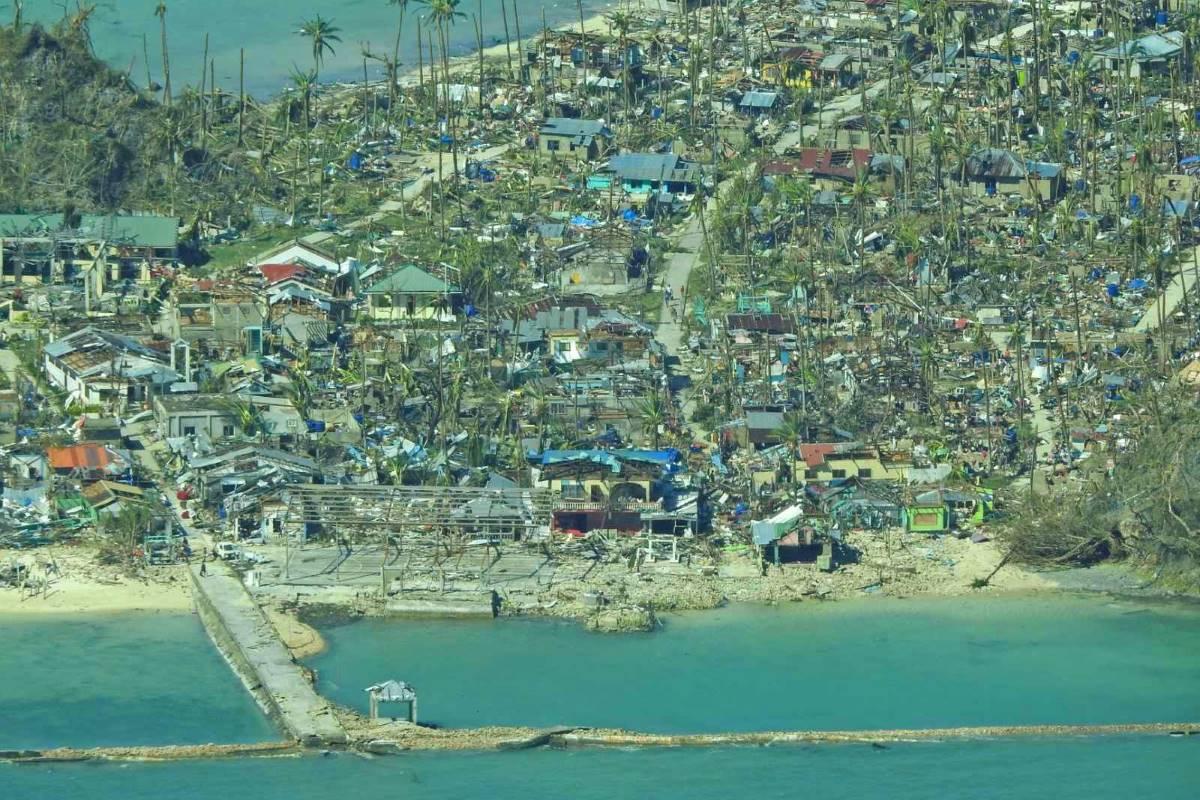At least 100 reported dead due to Typhoon Odette —officials

More than 100 people have been killed in the strongest typhoon to hit the Philippines this year, official tallies showed Sunday, as efforts to deliver water and food to devastated islands ramped up.
More than 300,000 people fled their homes and beachfront resorts as Typhoon Odette (international name: Rai) ravaged the southern and central regions of the archipelago.
The storm knocked out communications and electricity in many areas, ripped off roofs, damaged hospitals, toppled concrete power poles and flooded villages.
Bohol Governor Arthur Yap said on his official Facebook page that mayors on the devastated island had so far reported 72 deaths in their towns.
Ten people also died on the Dinagat Islands, provincial information officer Jeffrey Crisostomo told AFP.
That took the overall number of reported deaths to 108, according to the latest official figures, making it one of the deadliest typhoons to hit the country in years.
But the toll was likely to rise as disaster agencies assessed the full extent of the storm's aftermath across the vast archipelago.
Odette smashed into the country Thursday as a super typhoon packing wind speeds of 195 kilometers (120 miles) per hour.
Thousands of military, police, coast guard and fire personnel are being deployed to assist in search and rescue efforts in the worst-affected areas.
Coast guard and naval vessels carrying food, water and medical supplies are being dispatched, while heavy machinery—like backhoes and front-end loaders —are being sent to help clear roads blocked by fallen power poles and trees.
TINGNAN: Kaninang madaling araw, ika-19 ng Disyembre 2021, puspusan ang pagtatrabaho ng Philippine Coast Guard (PCG)...
Posted by Philippine Coast Guard on Sunday, December 19, 2021
"It's going to be a long, tough road for people to rebuild and get their lives back on track," said Alberto Bocanegra, head of the International Federation of Red Cross and Red Crescent Societies in the Philippines.
The organisation appealed for 20 million Swiss francs ($21.6 million) to fund urgent relief and recovery efforts.
An aerial survey of damage to parts of Bohol showed "our people have suffered greatly," Yap said.
'Reminiscent' of Yolanda
There has also been widespread destruction on Siargao, Dinagat and Mindanao islands, which bore the brunt of Odette when it slammed into the Philippines.
Aerial photos shared by the military showed severe damage in the Siargao town of General Luna, where many surfers and holidaymakers had flocked ahead of Christmas, with buildings stripped of roofs and debris littering the ground.
Tourists were being evacuated from the island on Sunday by plane and boat.
Dinagat Governor Arlene Bag-ao has said the damage to the island's landscape was "reminiscent if not worse" than that caused by Super Typhoon Yolanda (Haiyan) in 2013.
Yolanda was the deadliest cyclone on record in the country, leaving more than 7,300 people dead or missing.
"I saw how Typhoon Odette tore the provincial capitol apart, piece by piece," Dinagat PIO Crisostomo told Super Radyo DZBB.
"Big tables as heavy as a man went flying during the onslaught of the storm," he said.

In Surigao City, on the northern tip of Mindanao, shattered glass from smashed windows, roofing, power lines and other debris were scattered in the streets.
Tricycle driver Rey Jamile, 57, braved flooded streets and "flying" sheets of corrugated iron roofing to get his family to safety at a school evacuation center.
"The wind was very strong," he told AFP, adding now that the storm was over he was struggling to find water and food.
President Rodrigo Duterte visited some of the hardest-hit areas on Saturday after pledging to try to "raise money" to assist victims, admitting the government was broke.
Odette hit the Philippines late in the typhoon season—most cyclones typically develop between July and October.
Scientists have long warned that typhoons are becoming more powerful and strengthening more rapidly as the world becomes warmer because of human-driven climate change.
The Philippines—ranked among the globe's most vulnerable nations to the impacts of climate change—is hit by an average of 20 storms and typhoons every year, which typically wipe out harvests, homes and infrastructure in already impoverished areas. — AFP



